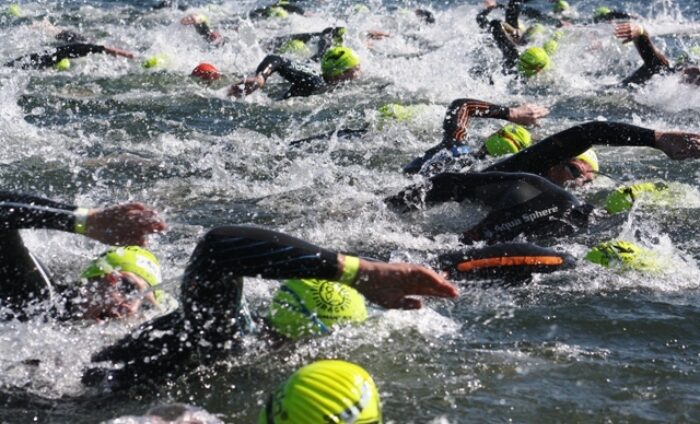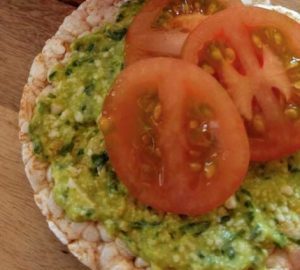
Do you really know if you’re starting your swim too fast? Plus two sets to improve your pacing.
How many of these swimmers have started too fast?
Last weekend I made a presentation at the Triathlon Expo in Manchester. One of my topics was pacing in open water swimming – a subject I turn to frequently. The advice I give is always the same: don’t start too fast! This is especially true in triathlon where you also have to ride and run.
The swimmers and triathletes in the audience reassured me that they understood the dangers of starting too fast and would never do it, but unless something has drastically changed in the few years since I’ve done a triathlon I wonder if that’s really true. In every mass participation swimming race or triathlon I’ve ever done or watched, there have been lots of people who’ve raced off from the start line at a much higher pace than what they can sustain.
Given that many people already appreciate the importance of pacing and, it appears, believe they are starting at an appropriate pace, I’m beginning to suspect that the real problem is not the understanding of pacing but the execution. People know how to pace a swim properly, but they can’t do it. They just don’t know that they are swimming too fast, because it’s the beginning of the race and they feel great. Great pacing is a skill, which means you can’t get it right just by thinking about it. It’s the same as knowing that pressing the keys on a piano makes music doesn’t mean you can play. You need to practise.
As far as I can tell, very few swimmers actively practise pacing. They spend their time doing drills or trying to improve their fitness, perhaps assuming that pacing skills and pace awareness will develop naturally. However, like learning any other skill, progress is much quicker if you pay attention and get frequent feedback. And the easiest way to do this, is back in the chlorine pit. The ideal tool for the job is a Tempo Trainer, but you can also use a pace clock.
It may sound boring, but a really effective way to improve your pacing is to repeat the same training set week after week, but instead of trying to swim faster each time, aim to improve your pacing. The training sets you do might also look pretty dull, but focussing on pacing can help them pass surprisingly quickly.
Try the following:
Set 1
16 x 100m front crawl with 10s rest after each 100m. Aim to swim every single 100m in exactly the same time. If you cannot maintain the pace, you’ve started too fast. Do it again the following week and start more slowly. Do not try to increase your speed until you can swim all 16 within plus or minus one second. Try to find the speed that makes the last few 100s tough but achievable.
Set 2
· 100m FC with 10s rest
· 200m FC with 20s rest
· 300m FC with 30s rest
· 400m FC with 40s rest
· 300m FC with 30s rest
· 200m FC with 20s rest
· 100m FC
The aim is to swim the same speed throughout. So, if you swim 1:45 for the first 100m, then you should swim 200m in 3:30, 300m in 5:15 and 400m in 7:00. The 100m probably needs to feel ludicrously easy for you to achieve the same pace over 400m.
These sets are good if your target swim is around a mile. If you’re training for longer swims, then adjust the distances accordingly. For example, try 8 to 12 x 400m if your target distance is 5km, or extend the pyramid up to 700m. You probably don’t need to go beyond this as a pace training exercise.
A Tempo Trainer can be a great help, but isn’t essential if you have a pace clock. Work out your time per length (or half length if you’re in a 50m pool) and set the interval between beeps accordingly. Now, if you’re on target, it will beep every time you turn and you will get immediate feedback if you’ve gone too fast or have fallen behind.
Perfect pacing isn’t easy. If you’re like many other swimmers, you may not even be aware that you’re starting your swims too fast. When you do these training exercises you learn to recognise and feel exactly what the right pace feels like at the beginning, in the middle and at the end. Take those same feelings into your next race.
Read more:
outdoorswimmer.com/guides/poor-pacing-produces-piss-poor-performance






